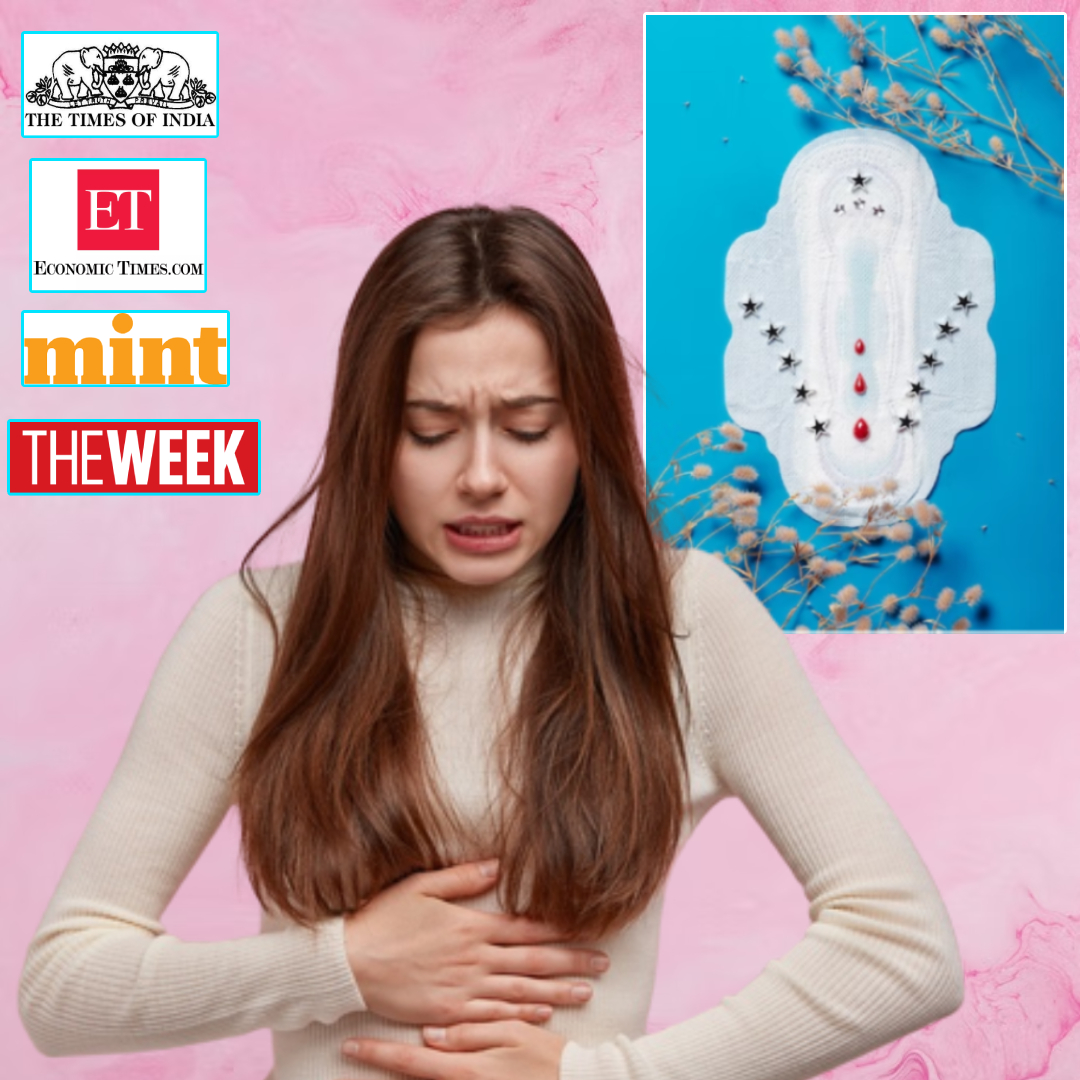Do Indian Sanitary Pads Contain 'Chemical Phthalates' More Than EU's Standard Limit? Misleading Information Viral
India, 30 Nov 2022 12:29 PM GMT
Editor : Bharat Nayak |
As the founding editor, Bharat had been heading the newsroom during the formation years of the organization and worked towards editorial policies, conceptualizing and designing campaign strategies and collaborations. He believes that through the use of digital media, one could engage the millennial's in rational conversations about pertinent social issues, provoking them to think and bring a behavioral change accordingly.
Creatives : Jakir Hassan
A journalist at heart loves the in-depth work of reporting, writing, editing, research, and data analysis. A digital and social media enthusiast.
Recently news went viral that the top sanitary napkin brands in India contain significant quantities of chemicals linked to heart conditions, diabetes, and cancer. It was based on a study that the author has corrected. The Logical Indian Fact Check team goes into detail of the claim.
Recently a study was conducted by a Delhi-based environmental NGO, Toxic Link, which claimed that the top sanitary napkin brands in India contain significant quantities of chemicals linked to heart conditions, diabetes, and cancer. Phthalates and other volatile organic compounds (VOCs) have been found in a total of ten samples of sanitary napkins in the study, which includes samples of six inorganics and four organic sanitary pads available in the market. The pads were tested to find the presence of DIPB, DBP, DINP, DIDP, and other phthalates.
VOCs are mostly added for fragrances, adsorbents, moisture barriers, adhesives, and binders. While phthalates are typically added to the sanitary pad layers to improve flexibility and gel qualities.
Based on the study's findings, several media outlets claimed that the concentrations of a combination of phthalates were found to be 0.0321 and 0.0224 grams in an organic and an inorganic sample, respectively, which is greater than 0.1% by the weight of the product mandated under EU regulations.
PTI did a report based on the findings, which was later picked as a syndicated feed by media outlets like The Times of India, The Economic Times, Mint, The Week, etc. They carried the same statement quoting the study of Toxic Link.
Also Read: Why Are Cloth Based Pads Demonised In Indian Market? Bursting Some Common Myths
Understanding the study sample in simpler terms:
We first went through the study conducted by Toxic Link and found that they have taken 10 sanitary napkin brands in their study comprising both organic and inorganic pads. They were identified as ISP1 (Whisper Ultra clean), ISP2 (Stayfree Dry Max), ISP3 Sofy Anti-bacterial, ISP4 (Nine Dry Comfort), ISP5 (Bella Regular Drai wings), ISP6 (Evereve Ultra Sanitary napkins) OSP1 (Pee Safe 100% organic cotton biodegradable), OSP2 (Azah Organic Pad), OSP3 (Plush 100% pure US cotton) and OSP4 (NUA light flow).
Across both organic and inorganic samples, a total of 12 phthalates and 24 VOCs were identified. 12 different phthalates were identified as "DIBP, DBP, DINP, DIDP, DMP, DEP, BBP, DNOP, DEHP, DHP, DIPP, DPP." Below you can see the table, which shows the names of sanitary napkins brands used in the study and the types of phthalates found in these pads.
Calculation error led to confusion:
The table also shows the levels of phthalates found in all tested sanitary napkins in parts per billion (ppb). Parts per billion are often used to describe the concentrations of solutes in very dilute solutions. In terms of formula, it can be defined as the number of grams of solute per million or per billion grams of solvent.
We found that the study carried Plush pure cotton and Sofy antibacterial phthalates counts in their findings to show that the total count is higher than European Union (EU) limit. Plush pure cotton phthalates count was 32,110 ppb (sum of all phthalates), while Sofy antibacterial stands at 26,750 ppb. However, the limit of ppb set by the European Union is 1000,000 ppb which is higher than the mentioned figure.
To understand this, we have to go through the finding of the study, which says, "concentrations of a combination of phthalates were found to be 0.0321 and 0.0224 gram in OSP3 and ISP3, respectively, which is greater than 0.1% by the weight of the product mandated under EU regulations". However, there is a mathematical error in the calculation.
The total concentration of plush pure cotton is 32110 ppb. When we convert this into grams, it stands for 0.000032110 grams. While the calculation in the finding shows 0.0321gm. Similarly, the total concentration of Sofy antibacterial will stands at 0.00002675gm. It means that phthalates in sanitary napkins are within the EU limits. To understand this, see the below calculation.
We also found that the Toxic Link later updated the study finding and removed the exceeded EU limit points. However, none of the media houses has updated their story so far.
The study still alarming:
Though the phthalates are under EU limits, the situation is still alarming for Indian women. The market for sanitary pads in India was estimated to be worth about US$618.4 million in 2021, yet no law regulates the inclusion of chemicals in sanitary products.
Dr. Aakanksha Mehrotra, who was part of this study and programme coordinator of Toxics Link, told the media, "As a mucous membrane, the vagina can secrete and absorb fluids at a higher rate than the skin". Chemical exposure caused by the pads can be more dangerous as the skin around the vaginal area is highly permeable.
If you have any news that you believe needs to be fact-checked, please email us at factcheck@thelogicalindian.com or WhatsApp at 6364000343.
 All section
All section















